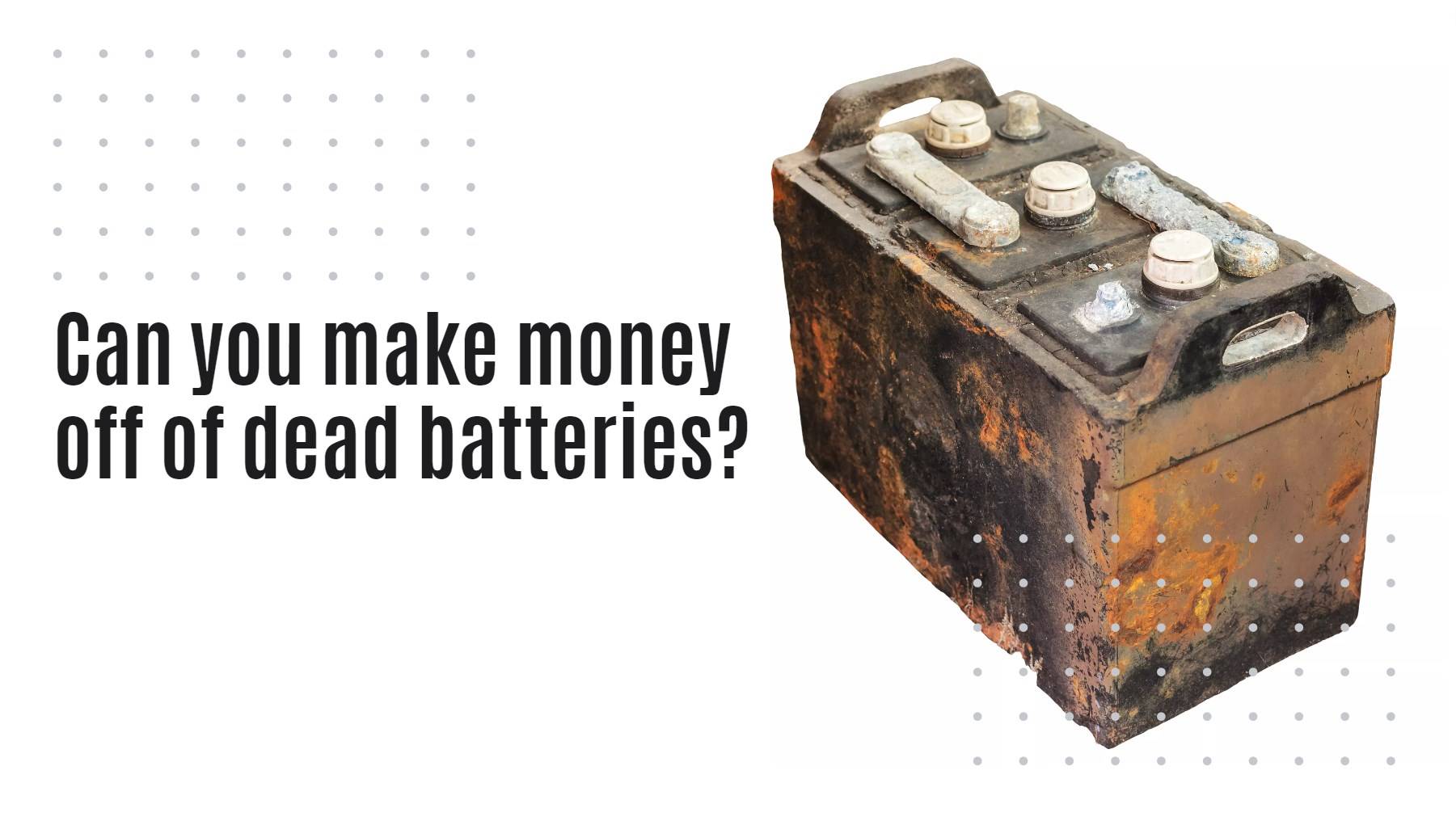- Forklift Lithium Battery
- Golf Cart Lithium Battery
- Rack-mounted Lithium Battery
51.2V 100Ah Rackmount LiFePO4 Battery
8000 times (80% DOD 0.5C)
Optional SNMP for TELECOM - Car Starter Battery
- 12V LiFePO4 Battery
12V 150Ah Lithium RV Battery
Bluetooth App | Self-heating
LiFePO4 | Group 31
UL 1642 | IEC 62619 - 24V LiFePO4 Battery
- 36V LiFePO4 Battery
- 48V LiFePO4 Battery
- 60V LiFePO4 Battery
60V 100Ah Lithium Battery (AGV, AMR, LGV)
Peak Discharge Current 400A
500 x 298 x 349 mm - 72V~96V LiFePO4 Battery
72V 100Ah Lithium Golf Cart Battery
Peak Discharge Current 315A (10S)
740 × 320 × 246 mm - Wall-mounted Lithium Battery
51.2V 100Ah 5kWh
Wall-mounted Battery532 x 425 x 170 mm / LiFePO4
>8000 Cycles (80% DOD 0.5C)
RS485 / CAN-bus
for Solar Home ESS - Home-ESS All-in-One
51.2V 32kWh
All-in-On HESS SystemPowerAll
51.2V / LiFePO4
>8000 Cycles (80% DOD 0.5C)
RS485 / CAN-bus / WiFi
All-in-One for Home ESS
Can You Make Money Off Of Dead Batteries?

You can indeed make money off dead batteries by recycling them, as many types contain valuable materials that can be reclaimed and sold. The profitability of this endeavor depends on factors such as the type of battery, local market conditions, and effective recovery methods.
How can you make money off dead batteries?
Making money off dead batteries involves several avenues:
- Selling Scrap Batteries: Many recyclers pay for used batteries, particularly those containing valuable metals like lithium, cobalt, and nickel.
- Reclaiming Valuable Materials: During the recycling process, metals and materials can be extracted and sold.
- Participating in Battery Collection Programs: Some companies offer cash incentives for collecting used batteries.
Chart Title: Profitability from Battery Recycling
| Battery Type | Average Value per Ton | Recovery Rate (%) |
|---|---|---|
| Lead-Acid | $300 – $500 | 90% |
| Lithium-Ion | $500 – $600 | 95% |
| Nickel-Cadmium | $400 – $550 | 85% |
What types of batteries are valuable for recycling, and why?
Valuable batteries for recycling include:
- Lead-Acid Batteries: Common in vehicles; they contain lead and sulfuric acid, which can be reclaimed.
- Lithium-Ion Batteries: Found in electronics and electric vehicles; they contain lithium, cobalt, and nickel.
- Nickel-Cadmium Batteries: Used in power tools; they contain nickel and cadmium, both of which have value.
What are the steps to recycle batteries for profit effectively?
To recycle batteries profitably:
- Collect Used Batteries: Gather as many dead or used batteries as possible.
- Sort by Type: Differentiate between lead-acid, lithium-ion, and other types.
- Find a Certified Recycler: Locate a reputable recycler who pays for scrap.
- Transport Safely: Ensure safe transport to prevent leaks or spills during transit.
- Negotiate Prices: Understand current market rates to negotiate effectively.
How does battery recycling contribute to sustainability and environmental protection?
Battery recycling plays a crucial role in sustainability by:
- Reducing Waste: Prevents hazardous materials from entering landfills.
- Conserving Resources: Reclaims valuable metals that reduce the need for mining new resources.
- Lowering Carbon Footprint: Reduces emissions associated with producing new materials.
What materials can be recovered from dead batteries, and how valuable are they?
Materials recovered include:
- Lead: From lead-acid batteries; highly valuable due to its reuse in new batteries.
- Lithium: Essential for manufacturing new lithium-ion cells; demand is soaring with electric vehicle growth.
- Cobalt and Nickel: Used in various high-performance applications; their prices fluctuate based on market demand.
Chart Title: Recoverable Materials from Batteries
| Material | Source Type | Average Market Value per Ton |
|---|---|---|
| Lead | Lead-Acid | $1,800 – $2,200 |
| Lithium | Lithium-Ion | $15,000 – $20,000 |
| Cobalt | Lithium-Ion | $30,000 – $40,000 |
| Nickel | Nickel-Cadmium | $20,000 – $25,000 |
What challenges do recyclers face in the battery recycling industry today?
Challenges include:
- High Processing Costs: The costs associated with safely processing various types of batteries can be significant.
- Regulatory Compliance: Navigating complex regulations regarding hazardous waste management.
- Market Fluctuations: Prices for recovered materials can vary widely based on global demand.
How does consumer behavior influence battery recycling rates and practices?
Consumer awareness plays a critical role:
- Increased awareness leads to higher participation in collection programs.
- Education about proper disposal methods encourages responsible behavior regarding old batteries.
Are there specific regulations governing battery disposal and recycling that impact profitability?
Yes, regulations vary by region but generally include:
- Requirements for safe handling and disposal of hazardous materials.
- Incentives or subsidies for companies engaging in environmentally friendly practices.
Expert Views“Recycling old batteries not only presents a lucrative opportunity but also contributes significantly to environmental sustainability,” states an expert in waste management solutions. “By reclaiming valuable materials, we not only reduce landfill waste but also lessen our reliance on virgin resources.”FAQ Section
- How much can I earn from recycling old car batteries?
You can earn between $5 to $15 per lead-acid car battery depending on local prices. - What should I do if I have a large quantity of old batteries?
Contact local recyclers who specialize in bulk collections or arrange a drop-off. - Are there any safety concerns when handling old batteries?
Yes, always wear gloves and goggles when handling used batteries due to potential leaks. - Can I recycle rechargeable household batteries?
Yes, many retailers offer programs for collecting rechargeable household batteries. - What happens to recycled materials?
Recycled materials are processed and reused in manufacturing new products or components.
















